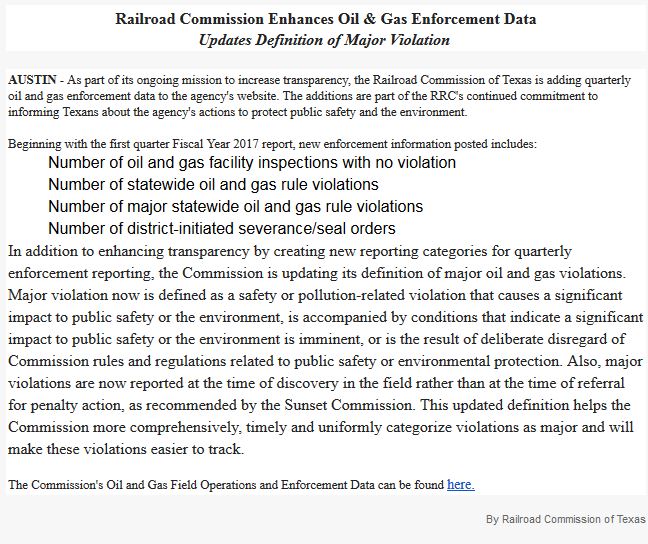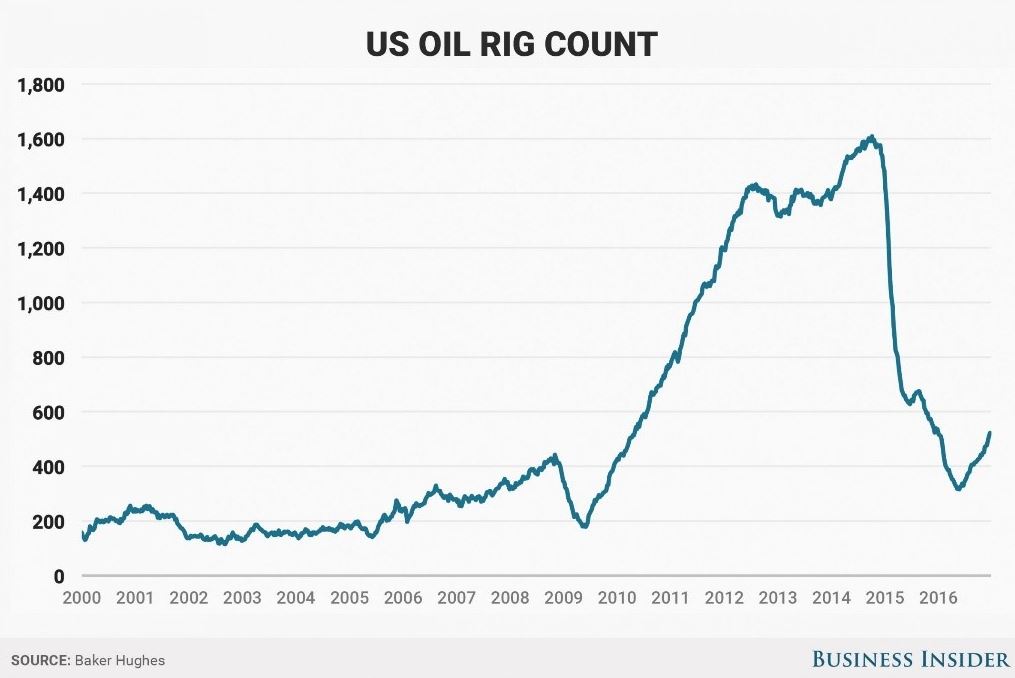Below is a press release from the Texas Railroad Commission about the “enhancement” of its website to provide reports of enforcement data related to oil and gas operations. The web page where the data can be viewed is here.
I have written before about the need for the RRC to put enforcement data online. At present it is not possible for landowners to track RRC actions in response to landowner complaints about operator activities. Compare the non-specific data provided on the RRC website to the specific online complaint-tracking process made available to Colorado residents by its Oil & Gas Conservation Commission, found here. The RRC wants you to know that it is doing its job, without disclosing details of any particular enforcement action. The Colorado Oil & Gas Commission provides useful information to landowners on how to make and track their complaints involving oil and gas activities.








